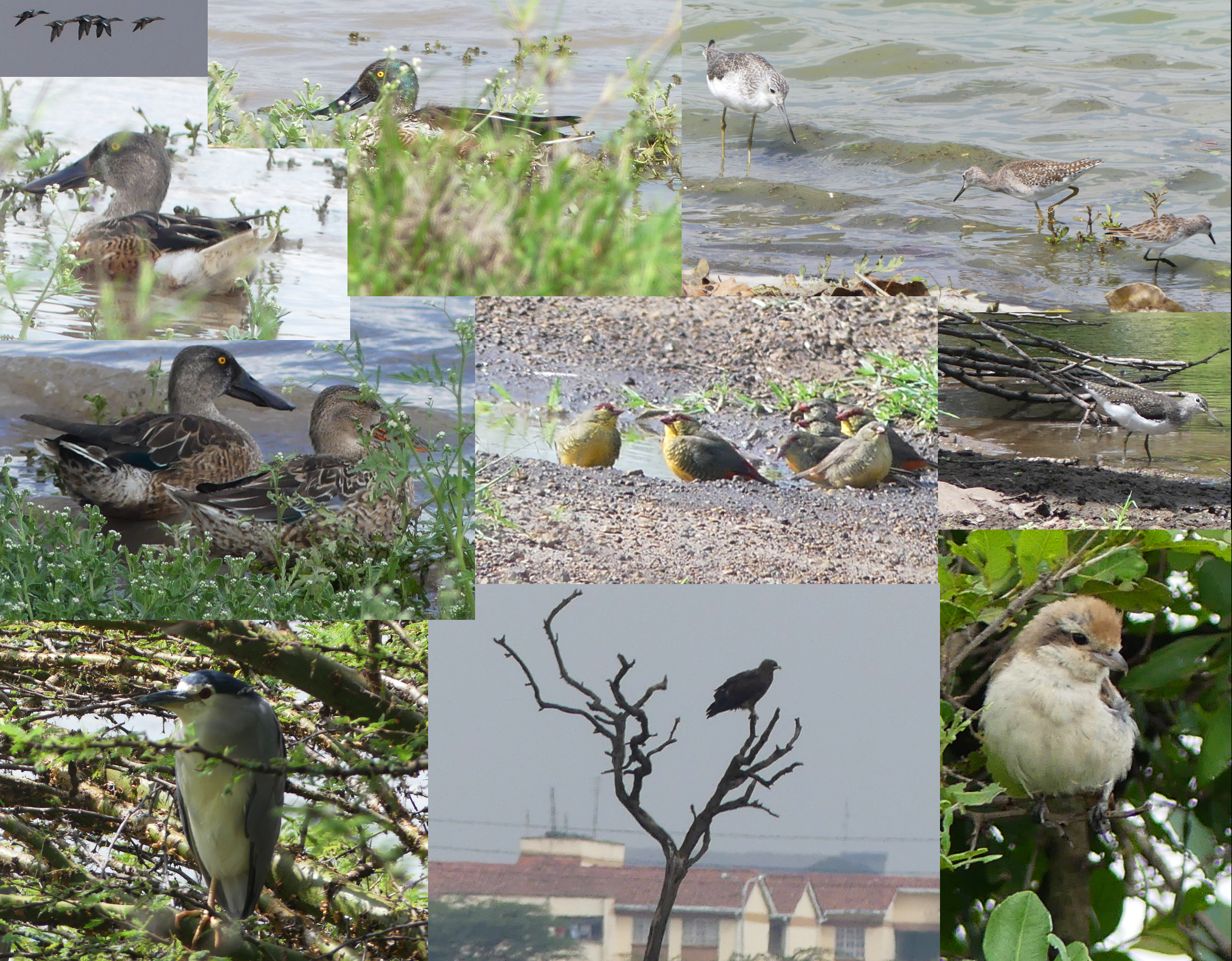From: Brian Finch <birdfinch@gmail.com>
Date: 2019-01-08 15:55
Subject: NAIROBI NATIONAL PARK 20th DECEMBER 2018
NAIROBI NATIONAL PARK 20th DECEMBER 2018
Dear All,
Nigel Hunter and myself arrived at the Main Gate Nairobi National Park
at 6.40am, there had been light showers overnight but it was a dry
morning though started off dull.
We had a walk around the Car Park before going through the gates; here
we picked up a few species not subsequently encountered such as
Green-backed Honeybird, Brown-backed Woodpecker, Yellow White-eye and
Northern Double-collared Sunbird. It was fairly active along the
entrance road, with various woodland species including several
Blackcaps, and a few Nightingales. A look at KWS Mess failed to
produce anything of interest, and Ivory Burning Site was quite quiet,
but did have more Blackcaps, Nightingales and a Garden Warbler. The
first of only four Turkestan Shrikes was also here.
Nagalomon Causeway was attractive to a few migrants which included
noisy but secretive Eurasian Reed Warblers, and an extravert but
silent Great Reed Warbler, the first in NNP this season. Whilst
scanning birds across Nagalomon Dam, we had a group of five Northern
Shovelers flying round and around and around but never settled and
after ten minutes of this they left. This was a new species for “Finch
Pentad” and it has now produced most of the possible duck species but
the Northern Shoveler was “missing” up until now. We continued
watching and found five Darter, a Yellow-billed Stork, four African
Spoonbill, two female type Western Marsh Harriers, the usual pair of
adult Fish Eagles, five Black-winged Stilts, a Common and a Green
Sandpiper, and White-rumped Swift which were widespread today, as were
Blue-naped Mousebirds.
Taking the back road to Hyena Dam it was fairly quiet, a couple of
hybrid Lovebirds were feeding on Rus, the first of two Augur Buzzards,
a dozen Eurasian Bee-eaters, but a couple more Eurasian Reed Warblers
remained in cover, the days only Isabelline Shrike was along here, and
the first of three Spotted Flycatchers.
On Hyena Dam, it was very quiet with a Little Grebe, the tame Squacco
Heron was along the Causeway, a pair of White-faced Whistling Ducks,
the first three of eight Grey Crowned Cranes, five Long-toed Plovers,
four Green, three Common and over forty Wood Sandpipers and a Ruff.
Also a female flava Yellow Wagtail and a Rosy-breasted Longclaw not
showing much colour as yet, and finally the first of four Whinchats.
The adult Greater Spotted Eagle sat tightly in his favourite tree
looking a little damp (see image), and forty Parasitic Weavers fed in
the weedy growth. We crossed the Mokoyeti and continued to Kingfisher
passing Nagalomon again. At the Kingfisher Swamp the African Water
Rail announced hi presence, and a Kori Bustard fed by the roadside,
nearby a Banded Parisoma was singing and by the old burnt area was the
first of four Northern Wheatears.
There was not too much of interest on the inside Maasai Gate road, but
on the Mokoyeti below Baboon Cliffs, the Pallid Honeyguide was singing
from his usual fig and a handsome and very tame Striated Heron was by
the river. Several Speckle-fronted Weavers were in the woodland above
Hippo Pools, but not sharing the area with anything else, but there
were a few waders on the ox-bow including all five common
Tringa-types. Rhino Circuit was very dry, four Violet Wood-Hoopoes, a
couple of Willow Warblers, another Banded Parisoma, several
Red-throated Tits, and along the creek was a Green Sandpiper that was
unusual for being so spotted as this time of year, (see image).
Along the Pipeline were a couple of Pied and Northern and a single
Isabelline Wheatear. Athi Dam was not too busy, the water level has
come up and invaded the bordering grassland leaving precious little
habitat for waders. However it did include the currently resident
African Darter, eight Black-crowned Night-Herons roosting on the
Causeway have been forced up to the upper levels of their roosting
tree and are very conspicuous (see image), six Yellow-billed Storks,
several African Spoonbills, the five Northern Shoveler seen at
Nagalomon Dam this morning (see images), four Spotted Thick-knees in
the shade of the mellifera, a few Wood, Common and Green, and two
Marsh Sandpipers, three Common Greenshank, twenty Ruff and eight
Little Stints, an Olivaceous Warbler sang from the Causeway.
On the return we called in at Eland Hollow, finding the only three
Black-winged Kites seen today, Isabelline, Northern Wheatears and
Whinchat sitting on top of the mounds, a dozen Orange-breasted
Waxbills which consisted mainly of immature birds were drinking from a
puddle, and several Banded Martins came in to drink.
We exited Langata Gate at 5.20pm finishing up with 184 species.
African Palm Swifts were a common and widespread species today, whilst
Barn Swallows were in very small numbers with no concentrations.
Best to all
Brian
KEY TO MONTAGE 20th DECEMBER 2018
1 EURASIAN SHOVELER – NAGALOMON DAM
This group of five flew round and around Nagalomon Dam
2 EURASIAN SHOVELER – ATHI DAM
The group of five relocated to Athi Dam where they were very approachable
3 COMMON GREENSHANK, WOOD SANDPIPER, LITTLE STINT
Showing how high the water is and how little shoreline is left.
4 ORANGE-BREASTED WAXBILLS
They must have bred locally judging by this large family group at Eland Hollow.
5 GREEN SANDPIPER
This bird is unusually spotted for this time of year.
6 BLACK-CROWNED NIGHT-HERON
Forced into open situation with the rise of the water.
7 GREATER SPOTTED EAGLE
Old faithful drying off after a damp night.
8 TURKESTAN SHRIKE
Migrant Shrikes in common with MOST migrants are extremely scarce tis
season. Foul play in Middle East and southern
Europe/Mediterranean/Baltic States are suspected.





